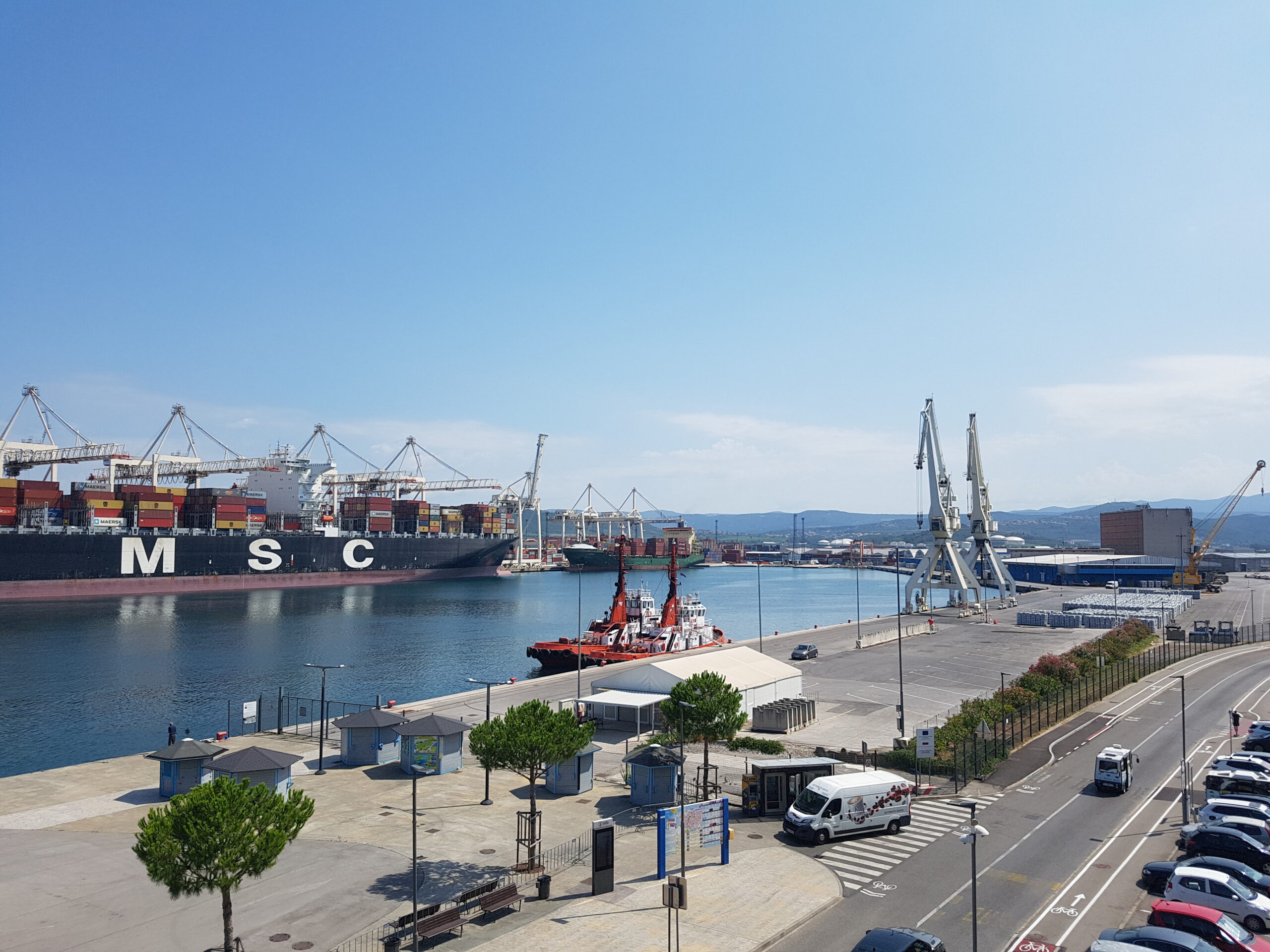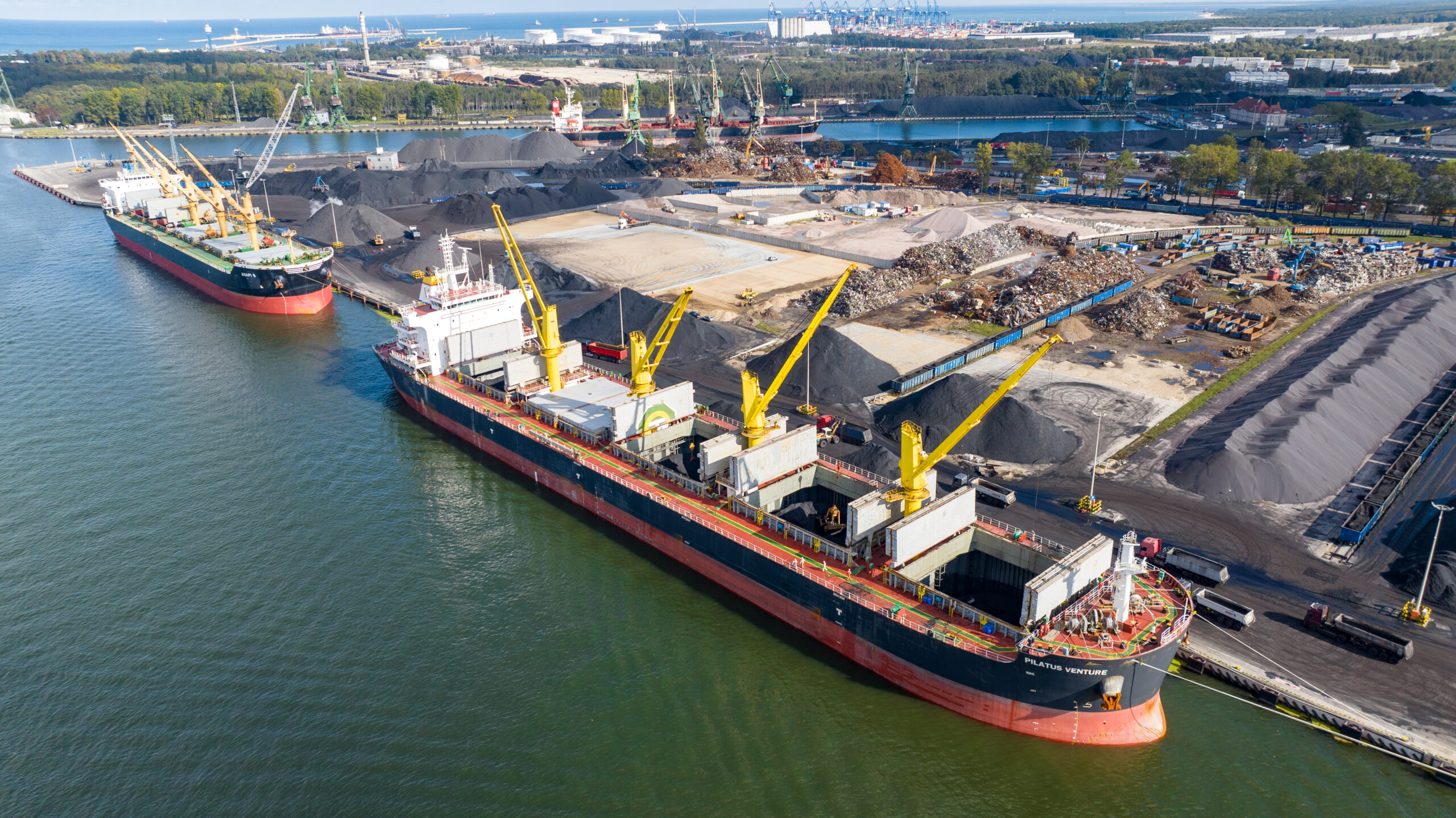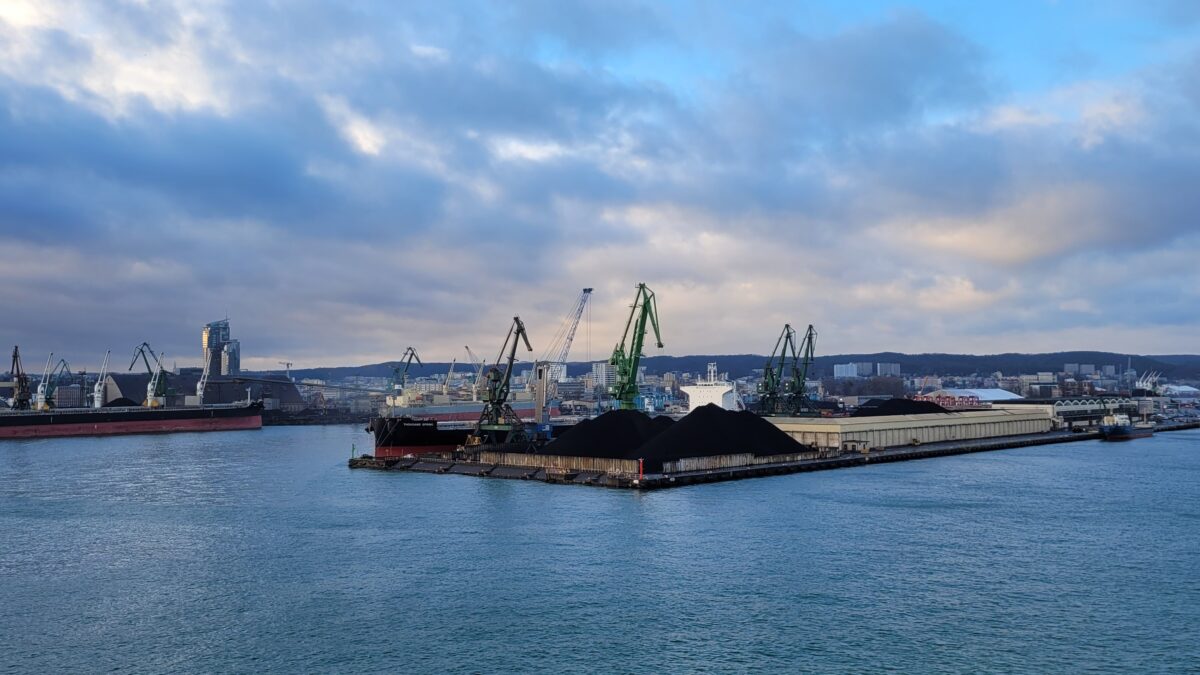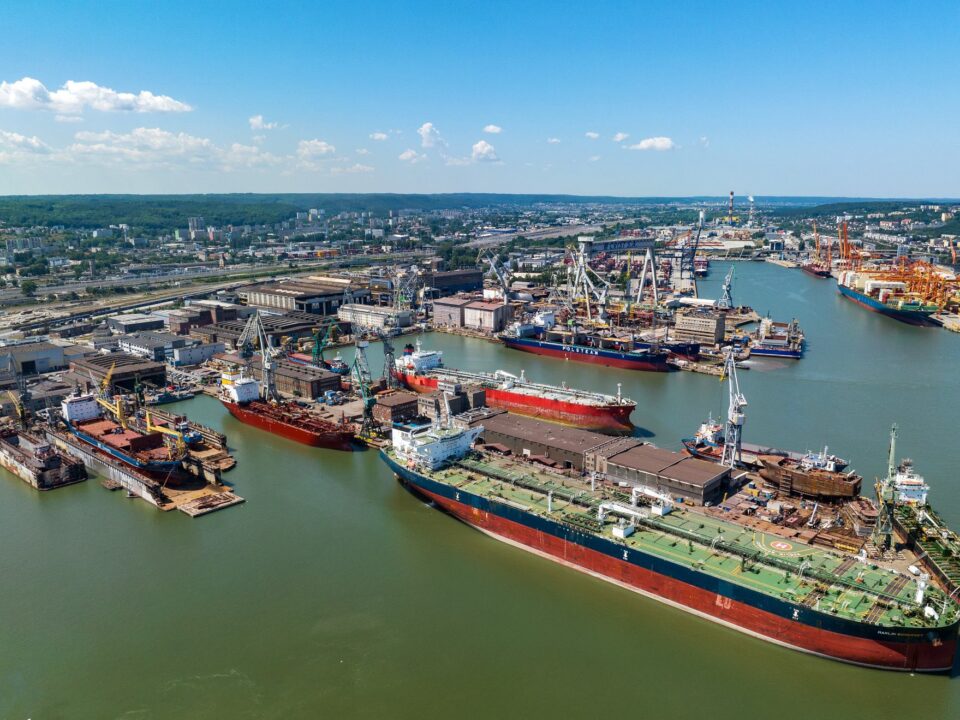
Growing competition for the Baltic Region
13 December 2023
Polish Ports Record
6 February 2024For another year in a row, the volume of bulk cargo handling in Polish ports already exceeds the previous year’s full-year volume after 10 months. By the end of October, the ports had transhipped 78.8 million tons of bulk cargo, a 29% increase over the same period last year, and already a 2.5% increase over the whole of last year.
Grain transhipments increased most dynamically in the past 10 months – by 45.2%. Very similar dynamics were also recorded in the area of liquid fuels, whose growth reached 43.8% and had the highest value in terms of volume – 12.4 million tons more of fuels were transhipped than last year. Coal transhipments also grew dynamically – by 26.7%. However, transhipments of other bulk commodities declined – by 7.2% and, mostly, ores – by 53.3%.
Bulk volumes grew faster than other commodity groups, allowing bulk cargoes to increase their share of total port turnover for the second year in a row. At the end of 2022, they accounted for 57.2% of all goods transported through the ports, a significant increase over 2021 when it was 49%. However, their share has continued to grow rapidly in the past 10 months, reaching 63.4% at the end of October. The last time such a high share of bulk cargoes in the total Polish port cargo transhipments took place in 2010. Over the next 11 years it steadily declined, but as you can see it only took 2 years to regain its previous importance.
Among the bulk cargoes themselves, liquid fuels have the largest share, increasing their lead over the other cargo groups in the past 10 months. At the end of October 2022, liquid fuels accounted for 47% of total bulk commodities, and reached 52% this year. The share of grain in total transhipments also increased, from 11% to 13%. Coal’s share of bulk turnover remained the same as a year ago at 25%. However, the share of other bulk cargoes declined, from 13% to 9%, and ores, from 4% to 1%.
The biggest contributor to the increases was the Port of Gdansk, where turnover increased by 44.8%, so that in just 10 months the volume of bulk transhipments there exceeded 50 million tons. Transhipments in Gdynia also increased dynamically – by 23.2%. In contrast, the West Pomeranian ports fared worse. In the Szczecin-Świnoujscie port complex, the increase was only 2.1%, while the Port of Police transhipped less cargo than in the same period last year, and by as much as 64.9%.
The past 10 months in terms of increasing transhipment volumes definitely belonged to the Port of Gdansk. Although it is already Poland’s largest port, it showed the highest turnover growth rate of 44.8%, an increase of 15.8 million tons to 51.2 million tons. This is what made it possible, after just 10 months, to exceed the level of all Polish port transhipments from the whole last year. The port of Gdansk was the only one to have a higher turnover on October 31st than in the entire last year by as much as 14.3%. The increase was achieved on all commodity groups except ores and in as many as 3 commodity groups – coal, grain and liquid fuels, it reached about 50%.
The second most dynamic port in terms of transhipment growth in the last 10 months was Gdynia. From January to October, Gdynia’s port workers transhipped 12 million tons of bulk goods. This volume is 23.2% higher than that achieved in the same period last year. Such an increase makes the volume of transhipments in the Port of Gdynia since the beginning of the year on October 31 comparable to the entire last year. It was only short by 100,000 tons, or 0.8%, to make the result for 10 months of this year equal to that for 12 months of last year.
The Szczecin-Świnoujscie port complex saw little change compared to Gdansk and Gdynia. It transhipped 15.3 million tons, an increase of 2.1%. However, this result is indicative of a good economic situation, because in 2018-2021, such a volume of transhipments was achieved by Szczecin and Świnoujscie longshoremen only by the end of the year. The things that contributed to this increase were grain transhipments – increase by 42.1%, other bulk cargo – increase by 22.2%, and liquid fuels – increase by 10.4%. On the other hand, the result was dragged down by volume decreases in coal – by 12.8% and ores – by 53.8%. The share of liquid fuels, which have the greatest importance in the total turnover, increased by only 3 p.p. to 42%. Other bulk cargo replaced coal in 2nd place increasing the share from 18% to 21%, and coal dropped to 3rd place reducing its share from 21% to 18%, so together these 2 groups still account for 39% of turnover. Grain gained 4 p.p. to reach 13%, exactly the same as last year’s ores, which in turn lost 7 p.p. and now stand at 6%.
The only port with an unequivocally poor performance in the past 10 months is the smallest of the analysed facilities at Police. It transhipped 352.5 thousand tons of cargo, 64.9% less than last year. Declines affected all cargo groups with the biggest one recorded for the category forming the basis for the operation of this port, i.e. other bulk cargo. They were transhipped 67.2% less than in the same period last year. There was also significantly less coal at the quays of the Police port, down by 58.6%, and ores, down by 38.2%. By the end of October, the Port of Police had only managed to execute 29.2% of the plan, which was executed in the entire 2022.
Article developed with Namiary na Morze i Handel magazine
phot. Namiary na Morze i Handel magazine






